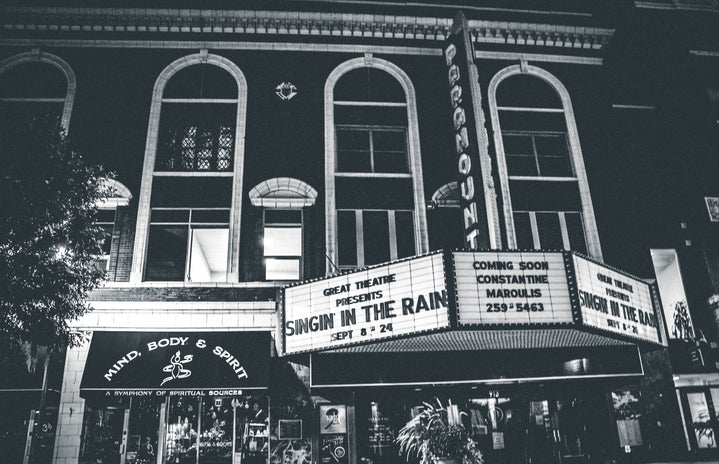Women have been seen as muses forever, but the way they were portrayed in the arts has changed through the years. In movies and on TV it was not different, from the glamorous women of The Golden Age to the strong female leaders of nowadays, women in the cinematographic industry have walked a long path to get where they are.
Through the years many characters broke the stereotype, Trinity from Matrix, Jo from Little Women, and the female characters from Wakanda. The representation that the media wants us to follow is not always the only representation, but unfortunately, it is the majority.
The Golden Age
If you are a woman who loves cinema, as soon as you hear “Golden Age” you probably think of Audrey Hepburn, Marylin Monroe, and Elizabeth Taylor. Those names come to our minds with the glamor of the period, with the classic beauty and iconic looks, but that’s it, on screen, those women were only put on highlights to enhance their beauty.
The female character back then had one main function. Look good. Marylin is seen, even nowadays, as the biggest Blonde Bombshell, a sex symbol. Even now, the picture we have of her is purely esthetical, the media is constantly erasing her personality and her thoughts.
It was hard to see women in roles who were more than just a pretty smile to the pretty man next to her. Audrey Hepburn in Breakfast at Tiffany’s kinda broke that paradigm. Holly Golightly is a self-sufficient, eccentric, and quite frequently erratic young woman. A character that is certainly a away of its time, Holly was way more than just a quietened supporting role. Unfortunately, most of the films back this time did not care that much about female experiences and feelings, and most of the female representations were there to support a male representation.
The 70s and 80s
The world was going through a lot of changes, and of course, cinema and TV would not be left out. Women started to win more screen time and their characters started, with baby steps, being more real. On TV, women had Wonder Woman, Maude from the sitcom Maude, and the unforgettable She-ra. Huge steps compared to the 50s, but it is important to remember that we still had a long way to go since they were not that representative, these women were all white and skinny.
One of the biggest stars of this period was Carrie Fisher and her iconic Princess Leia Organa from Star Wars. There are many reasons why Leia is so important to the fans, one of them is definitely the way she was so ahead of her time. In the first movie of the franchise, her name is the only one who appeared in the beginning credits, not even Luke Skywalker and Darth Vader are mentioned. Fisher brought to the light a character completely different from what we were used to, Leia was strong, challenging, and smart. Nowadays, it is completely normal to see a character like that, but back in the 70s, she was the one.
The iconic 90s and 00s
The 90s, surrounded with fashion icons, is the period every girl born in the 00s wished could have a taste of what it was like. When we think about women in the 90s it is undeniable that our first thoughts are the iconic rom-coms.
According to Carissa Vieira, a Brazilian screenwriter, women back then were represented in an independent way, with successful careers but at the same time, it was full of stereotypes, still portrayed as an accomplishment for men. A great example of a strong character created in the 90s is Kate from 10 Things I Hate About You.
Hey 2010s, I’m not like other girls
Our first thoughts when we think about women in 2010’s movies and series are the iconic dorky brunette girls. Ladies and gentlemen, Bella Swan raised a whole generation and we can not deny it. In the background, women were gaining more space, so the movies showed more female experiences and female perspectives. Although, that doesn’t mean that the representation was good.
On TV, we had The Vampire Diaries, Gossip Girl, and Pretty Little Liars. There was a whole vibe going on at the moment. The message was basically, to deny that princess side, girls are better when they read books instead of doing makeup when they are not like other girls. We had won with more females working in movies and series, that is for sure, but we lost a lot with the kind of thought that was being spread. A female rivalry was growing back then.
Women today
After all this path we got here… welcome to Barbieland! Well, not exactly, but the 2023 film Barbie from Greta Gerwig represents pretty well the female representation nowadays. Well, at least when we are talking about female directors.
Carissa Vieira highlights the importance of movies and series directed by women. Female directors tend to create more realistic characters than male directors who create women in films in the way they see women and not the way they really are.
We grow a lot compared to our past, but even today women keep getting a representation that it is not perfect. Female characters nowadays are portrayed as strong leaders and independent, they aren’t seen as just an accomplishment for the male character.
So the representation is great nowadays, right? Well, no. Unfortunately, today being in love and trusting in someone romantically is seen as a weakness. Many female characters are seen as strong and real women if they are not in love or in a relationship.
We can take Barbie as an example. Ken and Barbie don’t get together in the end, and that is fine, but the relationship between the two of them wouldn’t make Barbie less feminist or weak. As an answer for the years, women were told to be the princess waiting for the prince’s rescue, nowadays the female characters are close to that side, having a boyfriend or girlfriend makes you weak, when in reality that simply doesn’t make sense. Being in love and trusting in someone will not make a woman less powerful. To love and to be loved is not a weakness, it is a gift.
The article above was edited by Isadora Costa.
Liked this type of content? Check Her Campus Cásper Líbero home page for more!


